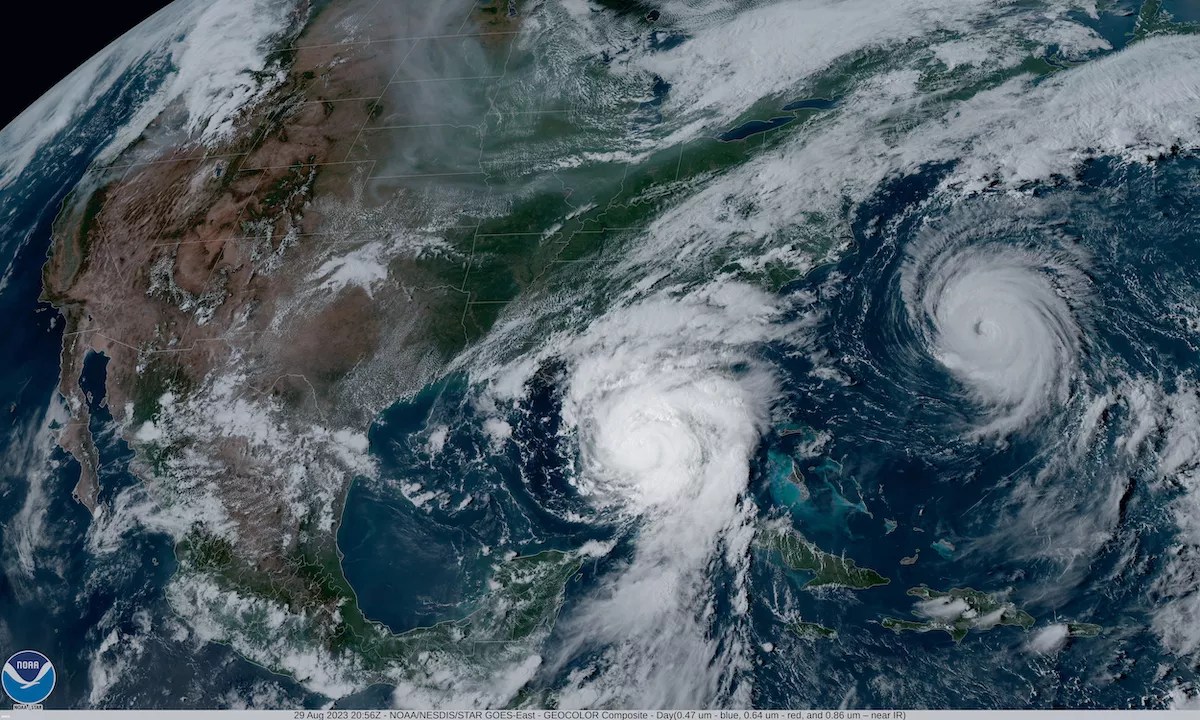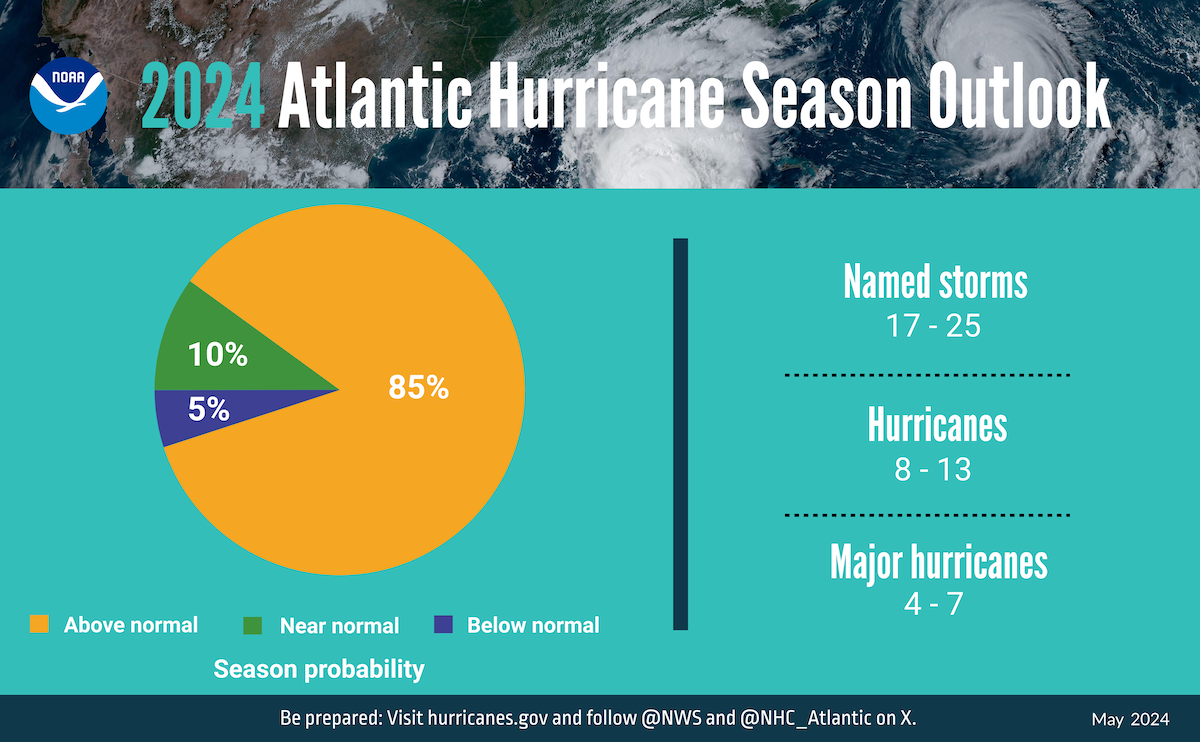
Photo by the National Oceanic and Atmospheric Administration (NOAA)

Audio By Carbonatix
There are three certainties in South Florida life: death, taxes, and Atlantic hurricane season.
This year, however, looking at the daily forecast in the tropics will be even more hair-raising than usual if forecasters’ predictions hold true.
On May 23, the National Oceanic and Atmospheric Administration (NOAA) released its 2024 Atlantic hurricane season outlook, which predicts a significantly “above-normal” season. The brutal projection anticipates anywhere from 17 to 25 total named storms, four to seven of which are forecast to become major Category 3 or higher hurricanes.
“Of note, the forecast for named storms, hurricanes and major hurricanes is the highest NOAA has ever issued for the May outlook,” NOAA administrator Dr. Rick Spinrad warned during a Thursday press conference.
The approaching hurricane season will be an unusually busy one due to a combination of factors, including the development of La Niña conditions and near-record warm Atlantic Ocean temperatures in the Atlantic basin driven by human-caused climate change, according to NOAA.
So, when does the season start, and just how bad do forecasters predict it will be?

The National Oceanic and Atmospheric Administration (NOAA) has predicted an 85% chance of an “above-normal” hurricnae season.
When Is Atlantic Hurricane Season?
The Atlantic hurricane season typically spans from June 1 until November 30.
Historically, tropical storm activity ramps up quickly near the beginning of August, hits a peak usually around September 10, and starts to taper off toward the end of October. On average, the season produces seven hurricanes.
The last hurricane to strike the U.S. in June was in 1986. The lighter early-season storm frequency doesn’t foreclose the possibility of a dangerous hurricane making landfall, however. One of the deadliest storms ever in the U.S., Hurricane Audrey, struck Louisiana and Texas in June 1957 as a Category 3.
What’s the 2024 Hurricane Forecast?
NOAA has forecasted anywhere from 17 to 25 named storms (storms with wind speeds of 39 mph or higher) – eight to 13 of which are predicted to become hurricanes, including four to seven major hurricanes.
This upcoming Atlantic hurricane season also has the potential to experience an above-normal west African monsoon, which could produce easterly winds that “seed some of the strongest and longest-lived Atlantic storms,” according to the NOAA.
Wind shear that can help weaken tropical systems will be reduced this year by La Niña’s meteorological effect, creating an environment even more conducive to hurricane formation, NOAA forecasters say.
When Were the Most Active Atlantic Hurricane Seasons?
The most active Atlantic hurricane season on record in terms of total storms was in the year 2020, which generated a remarkable 30 storms.
This included fourteen hurricanes, seven of which strengthened into major hurricanes.
The second-most active hurricane season recorded in the Atlantic was in 2005, which saw 28 named storms, 15 of which turned into hurricanes. Seven ultimately strengthened into major hurricanes.